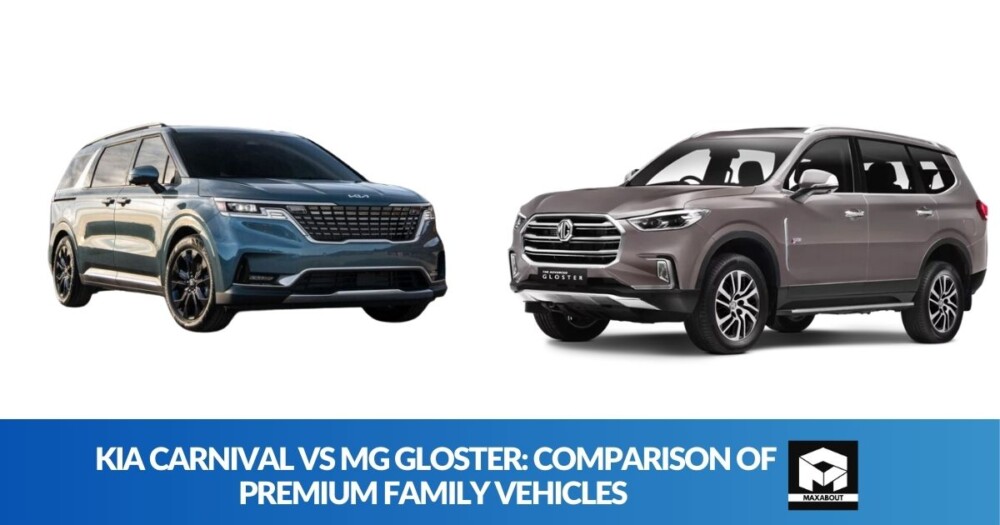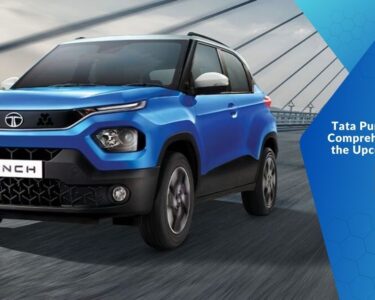Choosing the right family vehicle can be overwhelming, especially with so many options available today. This article aims to break down the key aspects of premium family cars, helping you make an informed choice. We’ll look at design, performance, safety, technology, space, ownership costs, user feedback, and overall value. By the end, you’ll have a clearer understanding of what to consider when selecting the best family vehicle for your needs.
Key Takeaways
- Premium family vehicles combine comfort and style for a great driving experience.
- Safety features are crucial, ensuring protection for all family members.
- Technology and infotainment systems keep everyone connected and entertained.
- Space and practicality matter; look for ample seating and cargo options.
- Cost of ownership includes not just the purchase price, but maintenance and fuel efficiency.
Design and Aesthetics
Exterior Styling of Kia Carnival
The Kia Carnival stands out with its modern and sleek design. Its bold front grille and smooth lines give it a sophisticated look. The vehicle is designed to be both stylish and functional, making it a great choice for families.
Exterior Styling of MG Gloster
The MG Gloster features a robust and commanding presence on the road. Its large dimensions and aggressive stance make it look powerful. The chrome accents and LED headlights add a touch of elegance, appealing to those who want a strong yet stylish SUV.
Interior Design and Comfort
Inside, both vehicles prioritize comfort and space. The Kia Carnival offers spacious seating with high-quality materials, ensuring a pleasant ride for all passengers. The MG Gloster also boasts a roomy interior, with plush seats and a well-thought-out layout that enhances the overall driving experience.
Material Quality and Finishes
When it comes to materials, the Kia Carnival uses premium finishes that feel durable and luxurious. In contrast, the MG Gloster combines practicality with elegance, using high-quality materials that are designed to withstand the wear and tear of family life.
Both vehicles aim to provide a comfortable and stylish environment, making them ideal for family outings.
Performance and Handling
Engine Specifications and Power
When it comes to family vehicles, engine power is crucial. Many premium models offer a range of engine options, from efficient hybrids to powerful petrol and diesel engines. A strong engine can make a big difference in how a vehicle performs on the road.
Transmission Options
Transmission types vary across models, including:
- Manual Transmission (MT)
- Automatic Transmission (AT)
- Dual-Clutch Transmission (DCT)
Each type has its own benefits, with automatic options generally providing a smoother driving experience.
Ride Comfort and Handling
The ride comfort is essential for family trips. Many premium vehicles are designed to:
- Absorb bumps effectively
- Provide a quiet cabin
- Offer responsive steering
This ensures a pleasant experience for both drivers and passengers.
Fuel Efficiency
Fuel efficiency is a key factor for family vehicles. Many modern models come with:
- Hybrid options for better mileage
- Eco-driving modes to save fuel
- Advanced engine technology to reduce emissions
In summary, a good balance of performance and comfort is vital for family vehicles, making every journey enjoyable.
Safety Features
Standard Safety Equipment
When it comes to family vehicles, safety is a top priority. Most premium family cars come with essential safety features such as:
- Anti-lock Braking System (ABS): Helps prevent wheel lock-up during hard braking.
- Electronic Brakeforce Distribution (EBD): Distributes braking force to each wheel for better control.
- Airbags: Front and side airbags protect passengers in case of a collision.
Advanced Driver Assistance Systems
Many modern vehicles are equipped with advanced systems that assist drivers, including:
- Adaptive Cruise Control: Automatically adjusts speed to maintain a safe distance from the car ahead.
- Lane Departure Warning: Alerts drivers if they drift out of their lane.
- Blind Spot Monitoring: Warns drivers of vehicles in their blind spots.
Crash Test Ratings
Safety ratings from organizations like the National Highway Traffic Safety Administration (NHTSA) and the Insurance Institute for Highway Safety (IIHS) provide insights into how well a vehicle performs in crash tests. Higher ratings indicate better safety performance.
Child Safety Features
For families with young children, child safety features are crucial. Look for:
- ISOFIX Anchor Points: Securely attach child seats.
- Child Safety Locks: Prevent rear doors from being opened from the inside.
- Rear-View Cameras: Help in safely reversing the vehicle.
Technology and Infotainment
Infotainment Systems
Modern family vehicles come with advanced infotainment systems that make driving more enjoyable. These systems often include:
- Touchscreen displays
- Smartphone integration (like Apple CarPlay and Android Auto)
- Navigation features
- Voice recognition
Connectivity Options
Families need to stay connected on the go. Many premium vehicles offer:
- Bluetooth for hands-free calls
- USB ports for charging devices
- Wi-Fi hotspots for internet access
Driver Assistance Technologies
Safety is a priority, and many cars now include driver assistance features such as:
- Adaptive cruise control
- Lane-keeping assist
- Blind-spot monitoring
Sound Systems
A great sound system can enhance the driving experience. Premium vehicles often feature:
- High-quality speakers
- Surround sound options
- Customizable audio settings
In today’s world, technology in vehicles is not just about entertainment; it’s also about safety and convenience for families.
Space and Practicality
Seating Capacity and Comfort
When it comes to family vehicles, having enough space for everyone is crucial. Most premium family vehicles can comfortably seat five to seven passengers, ensuring that everyone has room to relax during long trips. The seats are often designed with comfort in mind, providing good support for both short and long journeys.
Cargo Space and Storage Solutions
Cargo space is another important factor. Many of these vehicles offer:
- Large trunks that can hold multiple suitcases or sports equipment.
- Flexible seating arrangements, like foldable back seats, to create more room when needed.
- Smart storage compartments throughout the cabin for smaller items, making it easier to keep the interior organized.
Family-Friendly Features
Family vehicles often come with features that make life easier, such as:
- Cup holders and storage bins within easy reach of all passengers.
- Rear air vents to keep everyone comfortable.
- Easy access to the third row, especially in SUVs, which is great for kids.
Third-Row Usability
The third row in many SUVs is designed for occasional use, but some models offer:
- Adequate legroom for older kids or smaller adults.
- Easy folding mechanisms to create more cargo space when the seats are not in use.
In summary, when choosing a family vehicle, consider how well it meets your needs for space and practicality. A well-designed vehicle can make family outings much more enjoyable.
Cost of Ownership
Purchase Price and Financing Options
When buying a family vehicle, the initial cost is a major factor. Prices can vary widely:
- Kia Carnival: Starts around $32,000.
- MG Gloster: Begins at approximately $40,000.
- Other competitors: Prices can range from $25,000 to $50,000.
Financing options include:
- Loans: Traditional bank loans or dealership financing.
- Leasing: Lower monthly payments but no ownership at the end.
- Cash Purchase: Paying the full amount upfront.
Maintenance and Service Costs
Owning a vehicle means regular maintenance. Here’s what to expect:
- Routine services: Oil changes, tire rotations, etc.
- Unexpected repairs: Brake replacements, battery issues, etc.
- Average annual cost: Typically ranges from $500 to $1,200 depending on the vehicle.
Fuel Costs
Fuel efficiency is crucial for family vehicles. Consider:
- Kia Carnival: About 22 MPG.
- MG Gloster: Roughly 18 MPG.
- Monthly fuel budget: Estimate based on driving habits and fuel prices.
Resale Value
The resale value can impact long-term costs. Factors include:
- Brand reputation: Some brands hold value better than others.
- Condition of the vehicle: Well-maintained cars sell for more.
- Market demand: Popular models tend to have higher resale values.
Understanding the total cost of ownership helps families make informed decisions. It’s not just about the purchase price; consider maintenance, fuel, and resale value too.
User Reviews and Ratings
Owner Satisfaction
Many families express high satisfaction with their premium family vehicles. Comfort and space are often highlighted as key benefits. Owners appreciate the smooth rides and spacious interiors, making long trips more enjoyable.
Expert Reviews
Experts generally agree that premium family vehicles offer a great mix of performance and luxury. They often point out:
- High-quality materials used in the interiors
- Advanced safety features
- Reliable performance across various models
Common Complaints
Despite the positives, some common issues arise:
- Higher maintenance costs compared to non-premium brands
- Limited cargo space in certain models
- Some users find the infotainment systems complicated to use
Reliability Ratings
Reliability is a major concern for families. Many premium vehicles score well in reliability tests, but some models have been noted for:
- Excellent long-term durability
- Frequent recalls or issues reported by owners
Overall, user reviews show that while premium family vehicles come with a higher price tag, many families find the investment worthwhile for the comfort, safety, and features they provide.
Value for Money
Feature-to-Price Ratio
When considering a family vehicle, the feature-to-price ratio is crucial. Families want a lot for their money. Here are some key points:
- Look for vehicles that offer advanced safety features without a hefty price tag.
- Check if the infotainment system is user-friendly and includes essential connectivity options.
- Consider the overall comfort and space provided for passengers and cargo.
Warranty and After-Sales Service
A good warranty can save you money in the long run. Here’s what to keep in mind:
- Look for warranties that cover at least three years or 36,000 miles.
- Check if the manufacturer offers roadside assistance.
- Research the availability of service centers in your area.
Competitor Comparison
Comparing similar vehicles can help you find the best deal. Consider:
- Pricing of competitors with similar features.
- Reviews and ratings from other families.
- Long-term reliability and maintenance costs.
Long-Term Investment
Investing in a family vehicle is significant. Here are some factors to consider:
- Resale value: Some cars hold their value better than others.
- Fuel efficiency: A vehicle that saves on gas can be more economical over time.
- Maintenance costs: Research common issues and repair costs for the models you’re considering.
In the end, finding a family vehicle that balances features, price, and reliability can lead to a satisfying ownership experience.
Final Thoughts on Premium Family Vehicles
In conclusion, choosing the right family vehicle is crucial for comfort and safety. Our comparison shows that many premium SUVs offer great features like spacious interiors, reliable performance, and advanced safety options. The Kia Sportage stands out as a top choice, thanks to its solid build and roomy design. However, it’s important to remember that not all vehicles are created equal. Some models, like the Jeep Compass, may not meet family needs as well. Always consider what matters most to your family, whether it’s space, comfort, or reliability, before making a decision. Happy car hunting!
Frequently Asked Questions
What should I look for in a family SUV?
When choosing a family SUV, check if it has enough space for everyone and their gear. Make sure the seats are comfortable and that there are safety features like seatbelts and airbags.
Can an SUV hold seven passengers?
Some larger SUVs have a third row of seats that can fit seven people, but many family SUVs only seat five. If you need room for seven, look for those specific models.
Which family SUV is the most reliable?
According to surveys, the Lexus NX is often rated as one of the most reliable family SUVs. It has great reviews from owners.
What is the best family SUV for driving?
If you want a fun drive, the BMW X3 is a great choice for its sporty feel. For comfort, the Kia Sportage is highly recommended.
How do I know if a family car is safe?
Look for cars with good crash test ratings and safety features like Anti-lock Braking System (ABS) and airbags. Checking reviews can also help.
What is a good budget-friendly family SUV?
The Maruti Suzuki Ertiga is one of the more affordable options for a family SUV, offering good space and features at a lower price.




